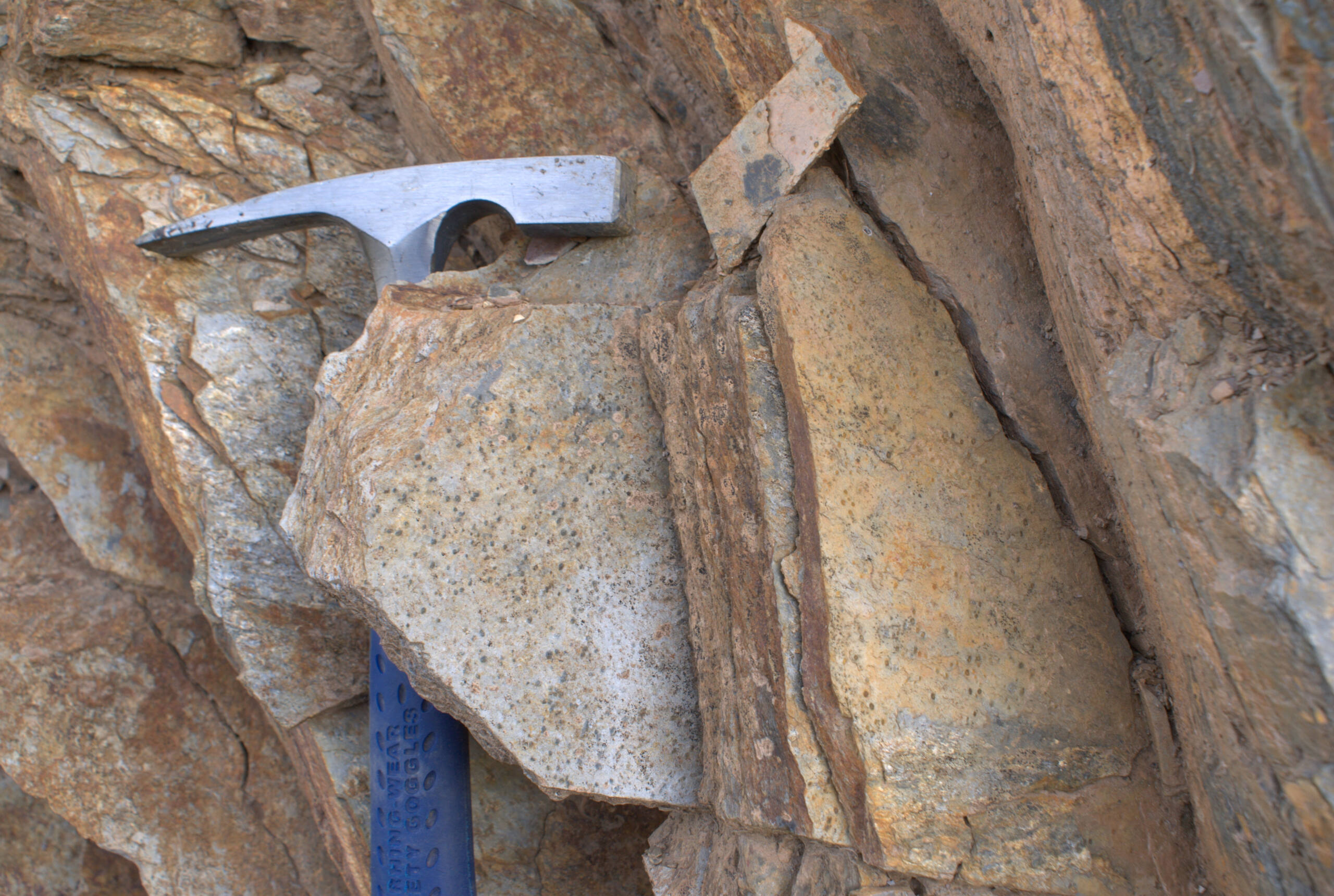LOCATION AND ACCESS
To reach the geosite, take a forest track that leaves the EX-118 to the right in the direction of Bohonal de Ibor, at kilometre 37; this corresponds to the Casitas de Papel y del Castañar de Ibor geological route. The Geosite is 10.5 km from the start of the route, after following a small path of 125 m that goes off to the right of the main path. This last stretch must be covered on foot, as a fence prevents access by car.
State of access/difficulty: The path is a dirt forest track which in some sections is impracticable if you are not on all-terrain vehicles. The path to be followed on foot presents no difficulties.
ATTRACTIONS OF THE VISIT
At this point, known as Era de Porrinas, there are also goatherds’ houses, which are now abandoned. They are built with fine slabs of the silurian slate that can be found in the surrounding area, which also make up Geosite 49 (Casitas de Papel) and are arranged in an orderly fashion in the form of dry stone to build the walls. Also visible is the circular paving in the vicinity of the structure, which would have been part of an ancient threshing floor.
As it is located very close to Geosite No. 47, its landscape features are similar. There is an abundance of a wide variety of plant species, including junipers and ash trees, alders, laurel, honeysuckle and riparian flora accompanying the Endrinal stream.
Relevant biotic elements: Medium-sized horseshoe bat, Egyptian vulture and Bonelli’s eagle.
GEOLOGICAL INTERPRETATION


